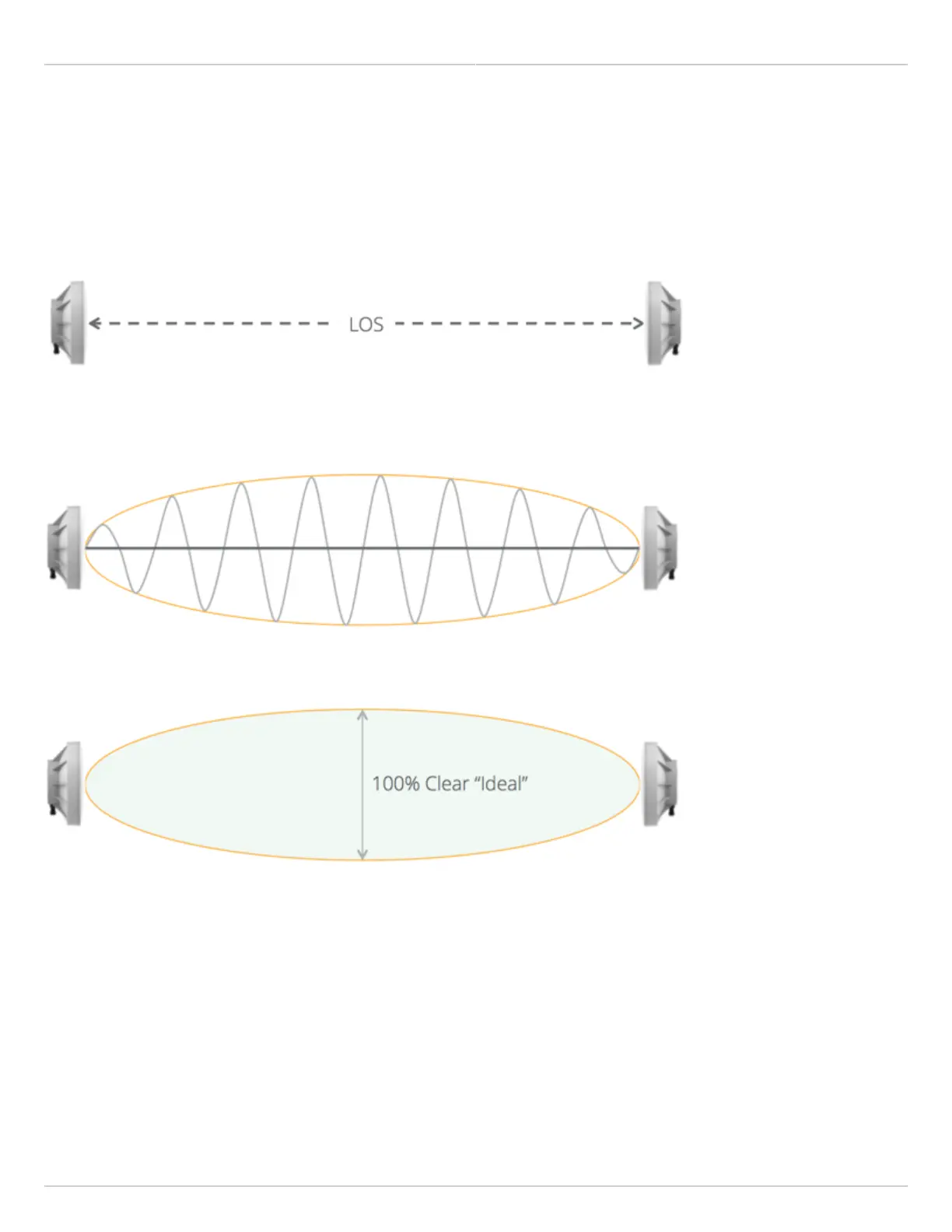Mimosa Backhaul Help Content
Mimosa Backhaul White Papers & Application Notes
Copyright © 2014 Mimosa Page 231
Fresnel Zones
You may have heard the terms Line of Site (LOS) and Non (or Near) Line of Site (NLOS). These terms describe the
whether or not any obstructions exist between two radios. Mimosa Backhaul radios are designed to operate best
with clear LOS, meaning that they must be able to see each other, but this is not the only requirement for reliable
data transmission.
Radio waves travel within a 3-D ellipse called the Fresnel zone (named for physicist Augustin-Jean Fresnel). Fresnel
zones are used to analyze the effect of obstructions on a radio signal.
If there are no obstructions, the Fresnel zone is said to be clear. Good wireless designs start with this in mind.
Obstructions inside the Fresnel zone can deflect radio waves, changing their phase and canceling out (or
weakening) the original signal on their way to the receiver. The first Fresnel zone is the most important, but there
are actually several more beyond the first one that have a smaller effect. Signal refraction from within the second or
third Fresnel zones can cause destructive or constructive interference in the primary zone. To keep things simple,
we’ll only focus on the first Fresnel Zone for now.
